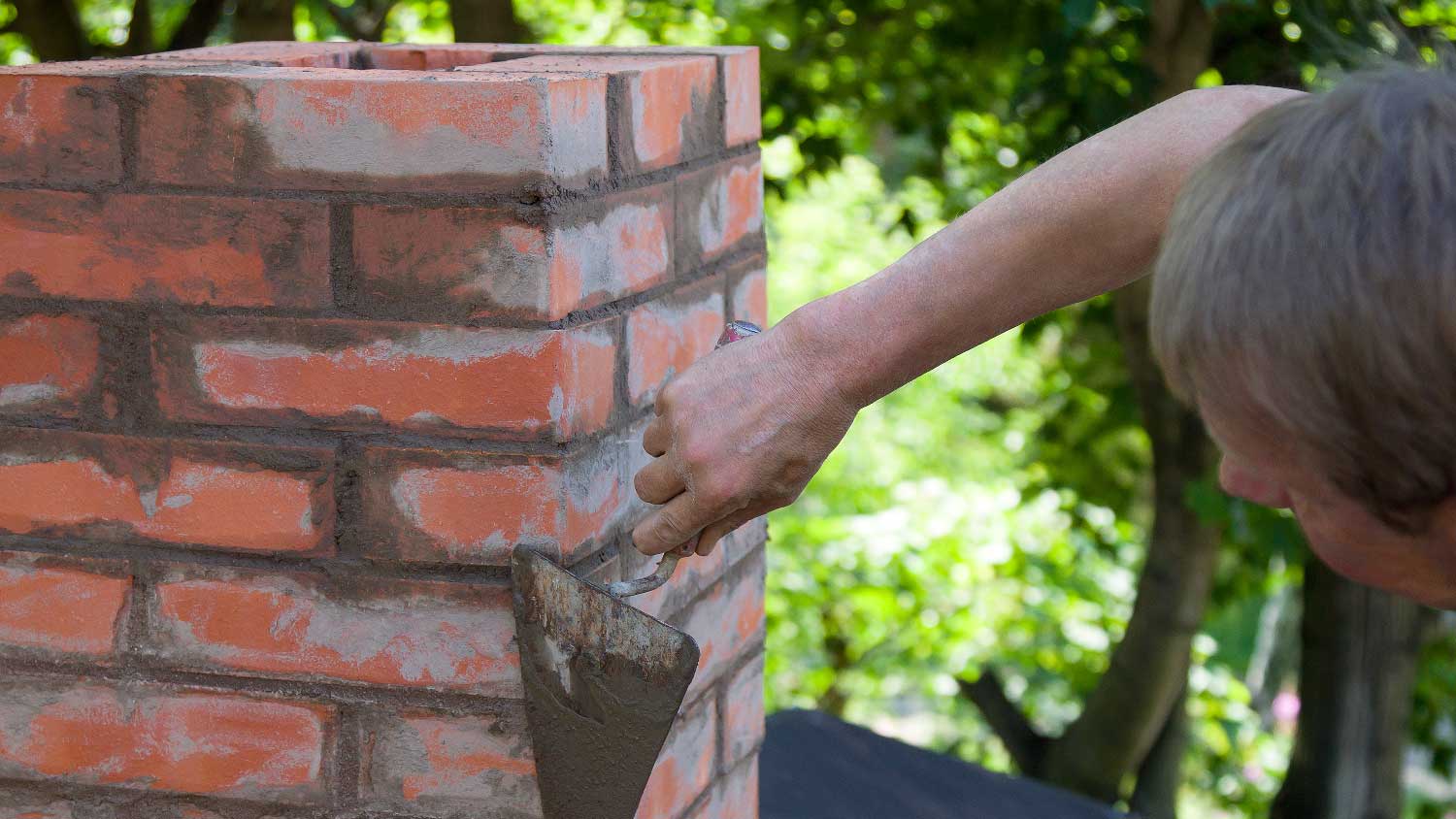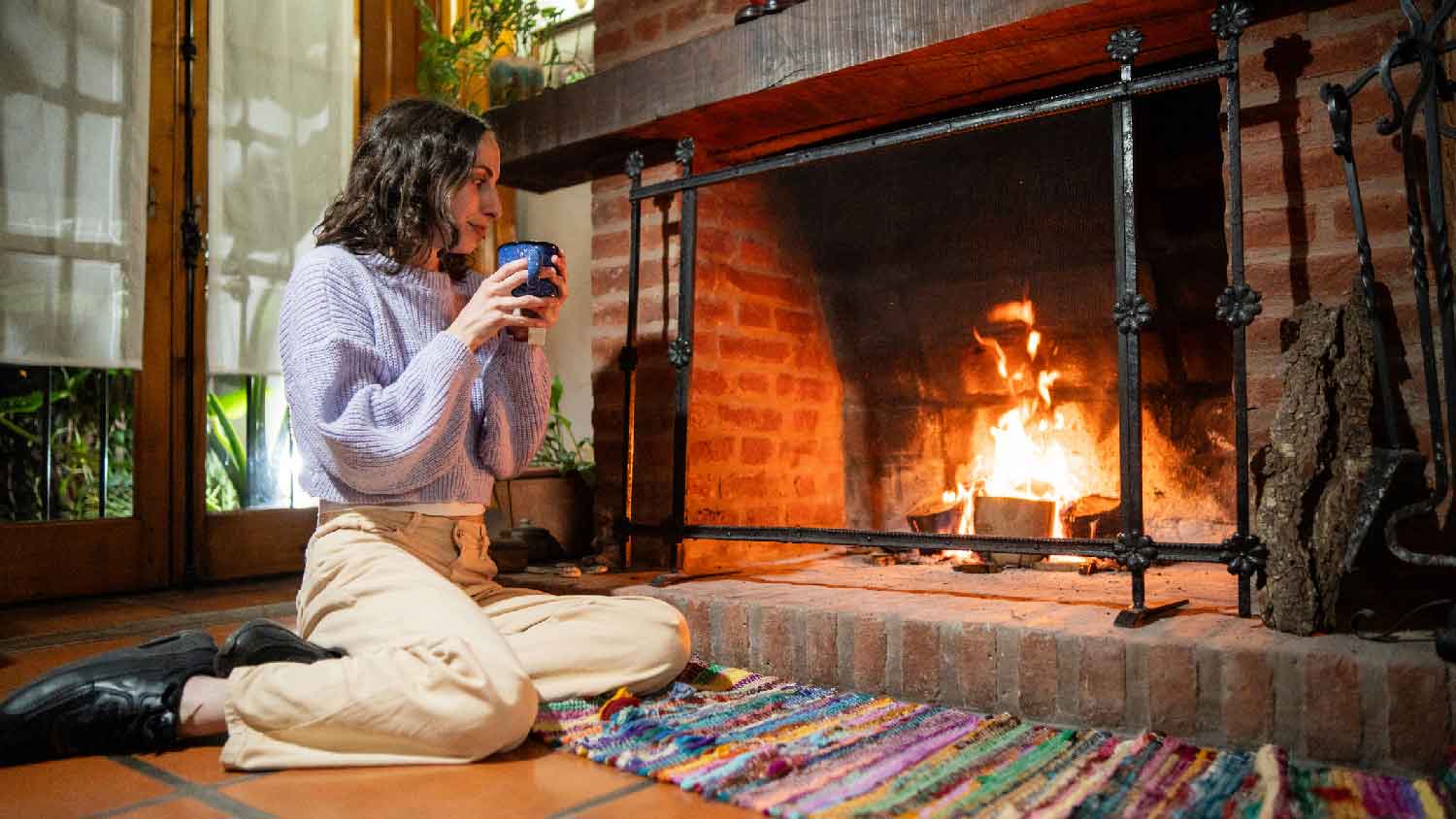
Discover the average chimney tuckpointing cost, key price factors, and expert tips to help you budget and save on your next chimney repair project.
Chimney repair costs depend on your project and location. Check with a local pro for your specific job.
Sealing a chimney costs $250 to $650, depending on whether you opt for sealing or waterproofing, the chimney's size, and the type of sealer.
Chimney sealers cost $35 to $90 per gallon, with liquid rubber and silane being the most budget-friendly options and siloxane and polyurethane being the most expensive.
The cost of labor is about $300 per hour, and your chimney repair pro will first need to clean the chimney, which ranges from $130 to $380.
It’s not just blowing smoke to say that your chimney endures a lot—from dirt and debris to vagabond critters looking for shelter. A chimney cap is the best way to keep these stowaways out while still allowing ventilation for your cozy, crackling fireplace. In many cases, you might also need to seal the chimney to prevent any cracks or other damage from getting worse. Getting everything done in one trip might cost anywhere between $35 and $1,350, depending on the price of the cap, as well as a number of other factors. We stack up your potential costs below.
Sealing a chimney involves first having a chimney without any damage. A chimney inspection is a good idea to make sure there’s nothing wrong with your chimney before you potentially seal in damage.
Although it won’t have a large effect on the total project cost, you need to decide if you need to seal or waterproof it. The differences between the two are subtle, but choosing the right one the first time will save you time and money in the end.
| Sealing | Waterproofing |
|---|---|
| Creates protective barrier | Fills minor cracks |
| Cost-effective | Stronger weather resistance |
| Does not address underlying issues | More thorough and lasting protection |
Chimneys tend to be similar in height to fireplaces, which are usually on the first floor of a house, with the chimney extending one or two floors above that. The good news is that waterproofing or sealing a chimney from the top down (which is done 99% of the time) takes a similar amount of time, and size shouldn’t be too much of a consideration.
However, size matters if you have a chimney with a double flue. There is a much larger amount of surface area to waterproof, so the cost increases. Any large or ornate chimney cap will also increase the labor and materials costs if it’s larger than average.
Material costs vary quite a bit based on the size of your chimney and what you plan on sealing it with. The two main choices are silicone and polyurethane. Most pros will recommend silicone instead of polyurethane as silicone has a much longer life span, cures quickly, and works well at any temperature.
Because silicone is made from inorganic materials, its life span is often double that of other sealant materials. Other materials are also used in sealants (like rubber and polyester), but they aren’t as common as polyurethane and tend to be more expensive. A pro will help you decide which material is best for your unique chimney.
| Type of Sealant | Material | Average Cost per Gallon |
|---|---|---|
| Black Diamond | Polyurethane | $55 |
| Chimney Saver | Siloxane | $90 |
| Flex Seal | Liquid rubber | $35 |
| LastiSeal | Polyester/Polyurethane | $60 |
| Masonry Defender | Silane/Siloxane | $38 |
Expect to pay more to have a chimney sealed if it is difficult to access due to factors such as trees, bushes, or steep rooflines. A chimney on a particularly tall roof may also cost more because it’s harder to access and can present a greater risk to the service professional.
Labor is an interesting aspect of chimney sealing, as sealing is a multi-step process. First, you need to clean the chimney. This costs, on average, $130 to $380. Professional chimney sweeps charge around $300 per hour, but they might not even need that long to thoroughly clean a chimney. Unfortunately, this isn’t a job you want—or could—do yourself.
Prepping a chimney for waterproofing or sealing mostly comes down to inspection. You want to make sure you’re applying the desired compound on a clean and undamaged surface; otherwise, the sealing may not be effective.
Some of the prep required for sealing a chimney:
Inspect the chimney for existing damage or cracks.
Thoroughly clean the chimney (hire a pro for this), and remove any debris.
Check and repair the flashing where the chimney meets the roof.
Replace or repair a damaged chimney cap.
Check that your chimney cricket still diverts water.
There are a few reasons why someone wouldn’t do the prep work themselves, with the most obvious being that the chimney is on the roof. Injury, fear of heights, and difficult chimney access are all reasons why you should not prep or seal your chimney yourself. Hire a local chimney repair professional to handle the work.
Because of the risks associated with sealing a chimney, you should always leave this job to a chimney repair pro near you. Any mistakes can compromise the integrity of your chimney, not to mention that extensive damage makes this job dangerous, and materials could fall and injure you. Plus, if you don’t properly seal the chimney, there is then a higher risk of carbon monoxide leaks in your home.
For your safety, always leave chimney sealing to a pro. Here are many reasons why a pro is the best person for this project:
Chimney sealing requires specialized knowledge and tools to do the job correctly.
Pros will ensure the chimney meets local building codes.
Mistakes from DIYing can lead to personal injury or further damage to your chimney.
Improper sealing could cause dangerous carbon monoxide leaks, which can be deadly.
Chimney sealing is a multistep process and may require help from multiple pros, including chimney sweeps and carpenters.
A pro can thoroughly inspect the chimney to determine the full extent of the damage and offer personalized recommendations for repairs and upgrades.
A pro will complete the job much faster than a DIYer.
Pros are licensed and insured, offering you more protection in the rare event of a mistake or accident.
We don’t recommend trying to seal your own chimney, but there are some tasks you can help with, including:
Clean the area around the fireplace, removing all logs and fireplace tools.
Clear off your mantel, and move items off the wall above the fireplace to protect them during the project.
Schedule with a pro chimney sweep to clean the chimney before a chimney pro comes to seal it.
Offer details about your chimney, including the estimated chimney size, how many floors your home has, and what problems you suspect are wrong (cracking, water leak, etc.).
Schedule an inspection and chimney cleaning.
Discuss the extent of the damage and what repairs may be necessary.
If your budget allows, discuss additional features like a chimney cap or a new damper.
Ask about the project timeline, including how long you’ll need to wait before using your fireplace after sealing.
Home is the most important place on earth, which is why Angi has helped more than 150 million homeowners transform their houses into homes they adore. To help homeowners with their next project, Angi provides readers with the most accurate cost data and upholds strict editorial standards. We extensively research project costs to develop the pricing data you see, so you can make the best decisions for you and your home. We rely on reputable sources, including the U.S. Bureau of Labor Statistics, academic journals, market studies, and interviews with industry experts—all to ensure our prices reflect real-world projects.
Want to help us improve our cost data? Send us a recent project quote to [email protected]. Quotes and personal information will not be shared publicly.
From average costs to expert advice, get all the answers you need to get your job done.

Discover the average chimney tuckpointing cost, key price factors, and expert tips to help you budget and save on your next chimney repair project.

Notice leaks and corrosion around your chimney? You might need new flashing or some careful repairs. Here are some common chimney flashing repair costs.

Chimney repair costs can vary by the type of chimney you have and the required repairs. Use this guide to help you estimate project costs.

Learn when and how to close a chimney damper to keep your home cozy and free from debris and creatures that can come down the flue.

How do you stop that pesky draft from your fireplace? The answer depends on why it’s there, but no matter what, there’s a fix for it.

Your chimney liner is a major piece of your fireplace. But what is it and what does it do? Learn the different types of flue liners and whether you need one.